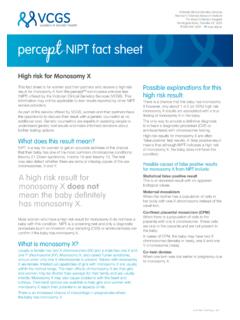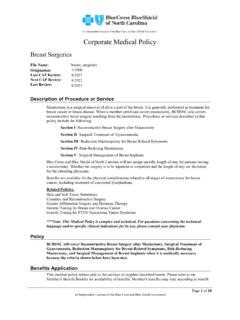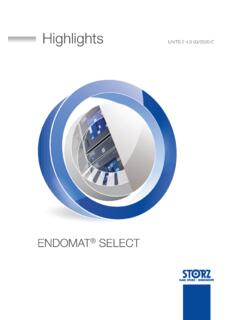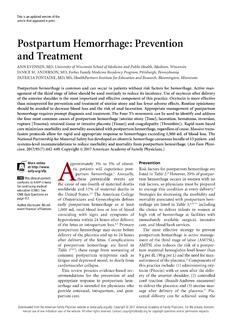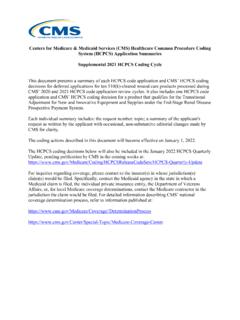Transcription of Hyperthyroidism: Diagnosis and Treatment
1 March 1, 2016 Volume 93, Number 5 American Family Physician 363 hyperthyroidism is an excessive concentration of thyroid hormones in tissues caused by increased synthesis of thyroid hormones, exces-sive release of preformed thyroid hormones, or an endogenous or exogenous extrathyroidal source. The most common causes of an excessive production of thyroid hormones are Graves disease, toxic multinodular goiter, and toxic adenoma. The most common cause of an excessive passive release of thyroid hormones is painless (silent) thyroiditis, although its clinical presentation is the same as with other causes.
2 hyperthyroidism caused by overproduction of thyroid hor-mones can be treated with antithyroid medications (methimazole and propylthiouracil), radioactive iodine ablation of the thyroid gland, or surgical thyroidectomy. Radioactive iodine ablation is the most widely used Treatment in the United States. The choice of Treatment depends on the underlying Diagnosis , the presence of contraindications to a particular Treatment modality, the severity of hyperthyroidism , and the patient s preference. (Am Fam Physician. 2016 ; 93 (5) :363-370. Copyright 2016 American Academy of Family Physicians.)
3 ILLUSTRATION BY TODD BUCKH yperthyroidism: Diagnosis and TreatmentIGOR KRAVETS, MD, Stony Brook University School of Medicine, Stony Brook, New YorkHyperthyroidism is an excessive concentration of thyroid hor-mones in tissues causing a char-acteristic clinical state. In the United States, the overall prevalence of hyper-thyroidism is , and the prevalences of overt hyperthyroidism and subclinical hyper-thyroidism are and , and PathogenesisThe common endogenous causes of hyper-thyroidism are Graves disease, toxic multi-nodular goiter, toxic adenoma, and painless thyroiditis (Ta b l e 1).
4 1-9 Graves disease, the most common cause of hyperthyroidism in the United States,2 is an autoimmune disor-der in which thyroid-stimulating antibodies activate thyroid-stimulating hormone (TSH) receptors, triggering thyroid hormone syn-thesis. Risk factors for Graves disease include female sex and personal or family history of an autoimmune ,3 Toxic multinodular goiter is the second most common cause of hyperthyroidism in the United States and the most common cause in older persons living in iodine-deficient Over time, nodules arise from the frequent replication of clonogenic cells that leads to a somatic activating muta-tion of TSH A single nodule is called a toxic adenoma (Plummer disease).
5 In contrast with these three disorders, painless or transient (silent) thyroiditis causes a destruction of thyroid follicles via an autoimmune mechanism and a release of preformed thyroid hormones into the Its clinical presentation is the same as with other causes. In a Danish study, its prevalence among patients with thyrotoxi-cosis was , as evaluated by Painless thyroiditis can be triggered by childbirth (postpartum thyroiditis) or by use of medications such as lithium, inter-feron alfa, interleukin-2, and hyperthyroidism develops in the first trimester of pregnancy as a result of the stimulatory action of placental beta human chorionic gonadotropin ( -hCG)
6 , which shares structural features with TSH, on the thyroid -hCG-mediated hyperthyroidism can occasionally be caused by hyperemesis gravidarum and, rarely, by a gestational trophoblastic rare causes of hyperthyroidism are TSH-secreting pituitary adenoma, metastatic follicular thyroid cancer, and struma online at This clinical content conforms to AAFP criteria for continuing medical education (CME). See CME Quiz Questions on page disclosure: No rel-evant financial affiliations. Patient information: A handout on this topic, written by the author of this article, is available at from the American Family Physician website at Copyright 2016 American Academy of Family Physicians.
7 For the private, noncom-mercial use of one individual user of the website. All other rights reserved. Contact for copyright questions and/or permission American Family Physician Volume 93, Number 5 March 1, 2016 Clinical ManifestationsThe clinical presentation of hyperthyroid-ism ranges from asymptomatic to thyroid storm (Ta b l e 2).10 -18 Elevated thyroid hor-mone levels amplify catecholamine signaling through increased numbers of cell surface beta-adrenergic receptors. The resulting adrenergic symptoms ( , palpitations, heat intolerance, diaphoresis, tremor, stare [an appearance of a fixed look due to retraction of eyelids], lid lag, hyperdefecation) are the most common manifestations of Hypermetabolism induces weight loss despite an increased appetite.
8 Neu-romuscular symptoms include weakness of proximal Psychiatric symp-toms range from anxiety to frank Patients with long-standing untreated hyperthyroidism may develop atrial fibril-lation (10% to 15% of patients13,14) or heart failure ( of patients15).Signs that are pathognomonic for Graves disease include orbitopathy, pretibial myx-edema (thyroid dermopathy), and thyroid acropachy, which occur in 25%, , and of patients, Goiters that develop in Graves disease are usually smooth and may have a thrill on palpation or a bruit on auscultation.
9 Single or multiple nod-ules on palpation raise suspicion for a toxic adenoma or a toxic multinodular goiter, although nonfunctioning thyroid nodules may coexist with a goiter in Graves orbitopathy manifests as exoph-thalmos or periorbital edema, and it can trigger photophobia, excessive lacrimation, SORT: KEY RECOMMENDATIONS FOR PRACTICEC linical recommendationEvidence ratingReferencesThe choice of Treatment modality for hyperthyroidism caused by overproduction of thyroid hormones depends on the patient s age, symptoms, comorbidities, and preference.
10 C25, 26 The diagnostic workup for hyperthyroidism includes measuring thyroid-stimulating hormone, free thyroxine (T4), and total triiodothyronine (T3) levels to determine the presence and severity of the condition, as well as radioactive iodine uptake and scan of the thyroid gland to determine the , 21 Methimazole (Tapazole) is the preferred antithyroid medication except in the first trimester of pregnancy and in patients with an adverse reaction to the medication. B26A = consistent, good-quality patient-oriented evidence; B = inconsistent or limited-quality patient-oriented evidence; C = consensus, disease-oriented evidence, usual practice, expert opinion, or case series.










